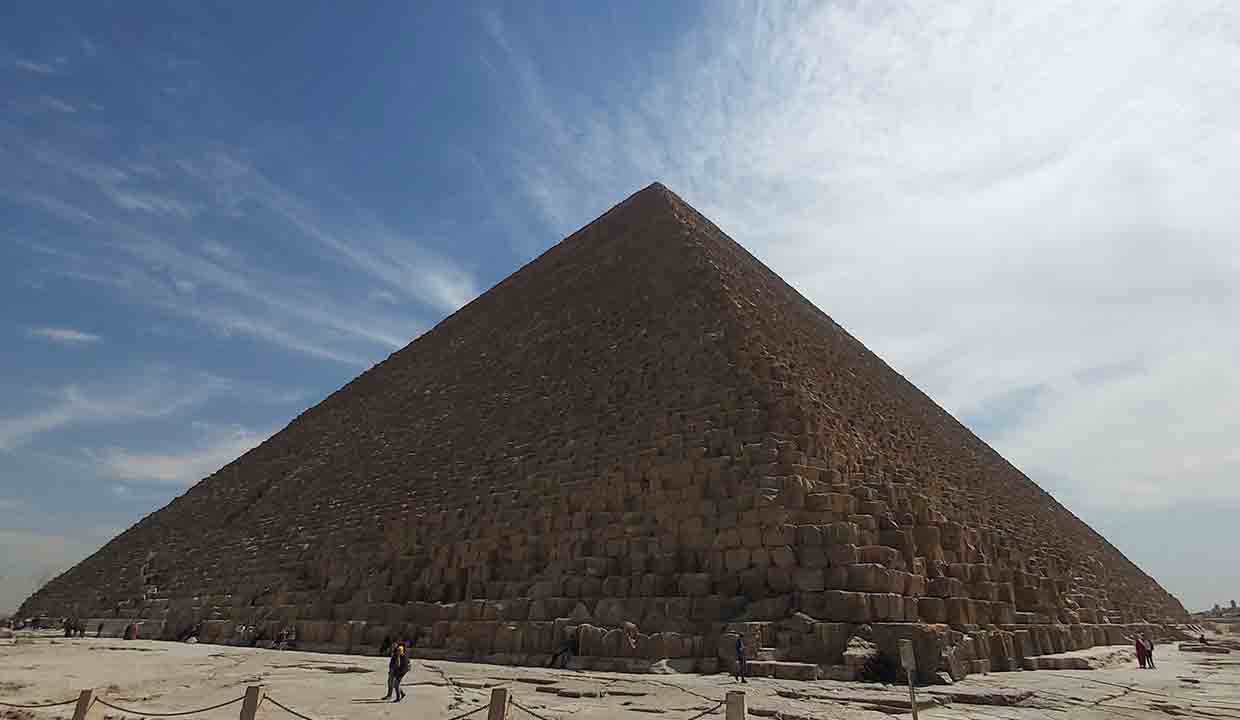Pyramid of Khufu: Where every stone has a story, echoing millennia of ambition, faith, and skill.
The ancient wonders of the world have always held a mystique for those who study them, but few are as enigmatic or as enduring as the Great Pyramid of Giza, also known as the Pyramid of Khufu. Named after Pharaoh Khufu (Cheops in Greek), this monumental edifice stands as a testament to ancient Egyptian ingenuity, spirituality, and ambition. Let’s journey through its corridors of time, peeling back layers of history and marveling at its grandeur.
Origins and Purpose
Dating back to the Fourth Dynasty of the Old Kingdom (around 2580-2560 BC), the Pyramid of Khufu was erected as a tomb for the Pharaoh Khufu. Its primary function was to serve as an eternal resting place, ensuring that the pharaoh’s ka (spirit) would be protected and honored. Integral to this was the ancient Egyptian belief in the afterlife and the resurrection of the soul.
Architectural Mastery
Originally standing at 146.6 meters (481 feet) but now reduced to about 138.5 meters (455 feet) due to the loss of its outer casing, the Pyramid of Khufu was the tallest man-made structure in the world for over 3,800 years.
The precision with which it was built is awe-inspiring. The base of the pyramid is almost perfectly square, with each side measuring approximately 230.4 meters (756 feet) in length. What’s even more astounding is that the sides are aligned to the cardinal points of the compass with incredible accuracy.
The interior of the pyramid houses three chambers: the King’s Chamber, the Queen’s Chamber, and a Subterranean Chamber. The King’s Chamber contains a red granite sarcophagus, believed to have held the body of Pharaoh Khufu.
Construction Techniques
One of the perennial questions regarding the Pyramid of Khufu is, “How was it built?” Estimates suggest that over 2.3 million blocks of stone, each weighing an average of 2.5 tons, were used in its construction.
Theories abound, from the use of a straight or spiral ramp to transport blocks to the use of counterweight systems. While the exact techniques remain a subject of debate, it’s universally accepted that the construction required a complex combination of manual labor, ingenuity, and organization.
The Casing Stones and Capstone
The original pyramid was encased in smooth, white Tura limestone casing stones that reflected the sun’s light, making it shine brightly. Sadly, most of these stones have since been removed, causing the pyramid to lose its polished appearance. The original capstone, or ‘pyramidion,’ is also missing. Some believe it was made of gold or electrum (a gold-silver alloy) to capture the first rays of the rising sun.
Cultural and Spiritual Significance
The Pyramid of Khufu is more than just a burial site; it’s a cosmic diagram aligning with celestial bodies. For instance, its sides are closely aligned with the Orion constellation, which, in Egyptian mythology, was associated with the god Osiris, the deity of rebirth and the afterlife.
Conclusion
The Pyramid of Khufu remains one of humanity’s most profound achievements. Its sheer size, precision, and the mystery surrounding its construction make it a marvel of both engineering and cultural expression. As we continue to study and admire it, the Great Pyramid stands silently, challenging us to remember the ancients and ponder the vastness of human potential.
